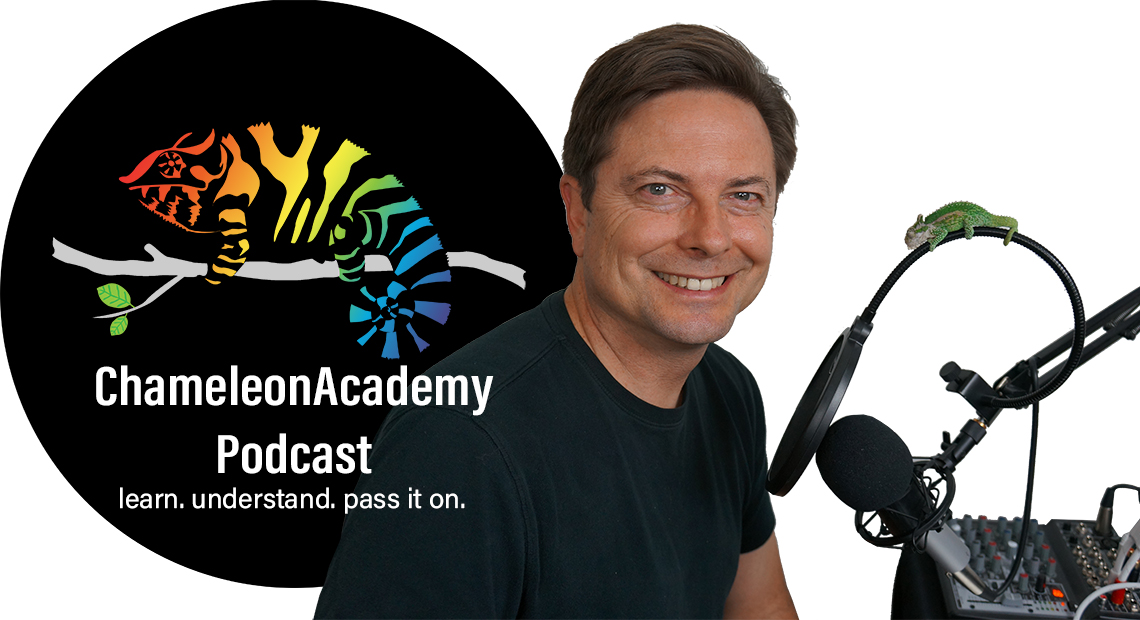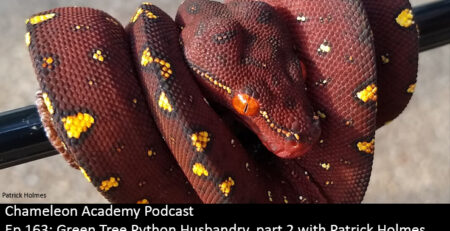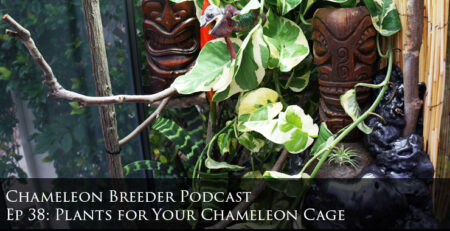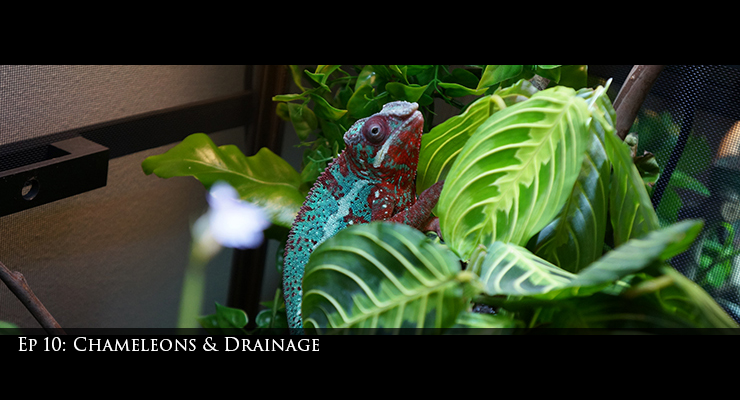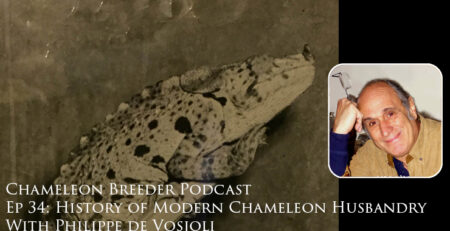Ep 159: Nighttime Temperature Drops with Petr Necas
Listen Here!
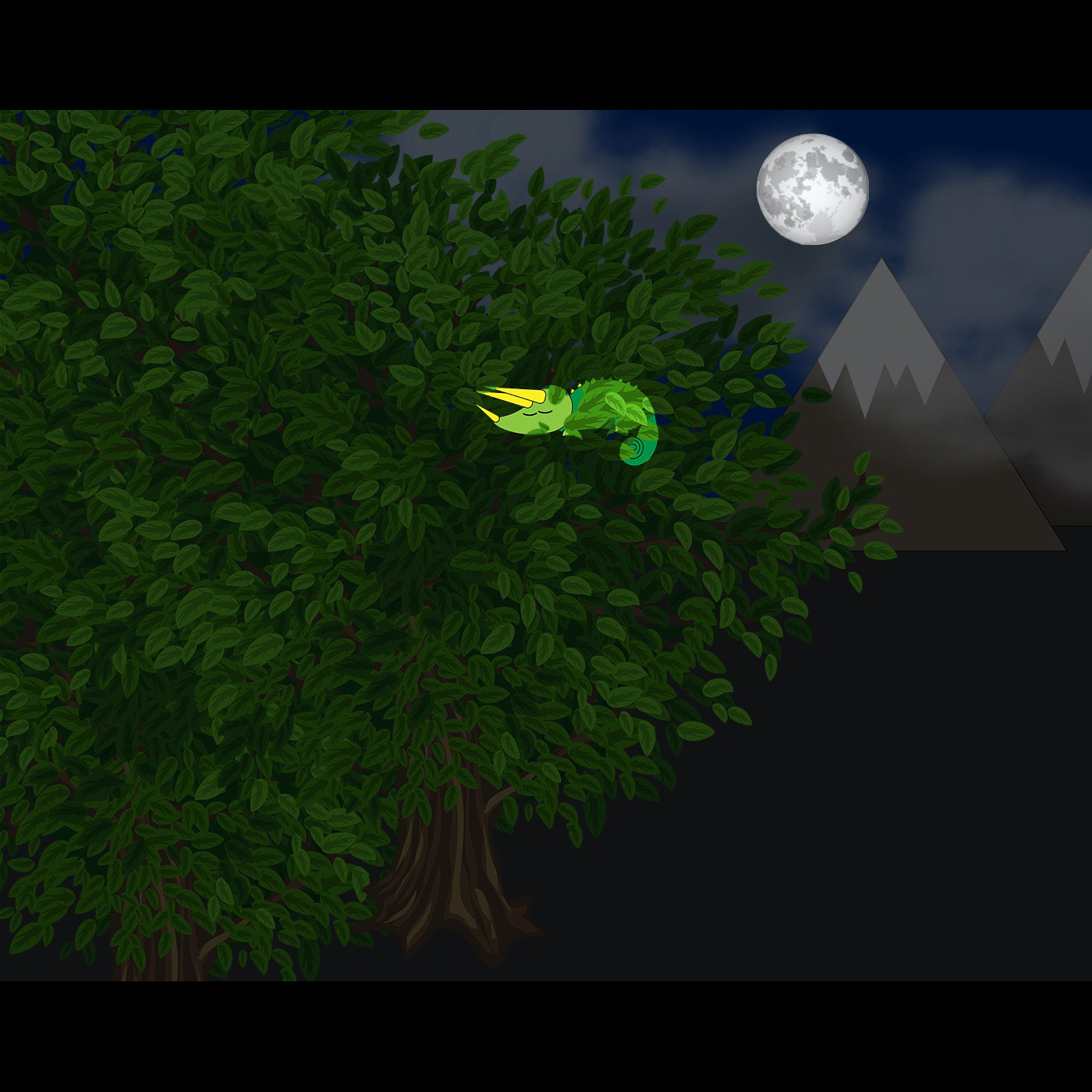

Bill Strand
Ep 159 Nighttime Temperature Drops with Petr Necas
Nighttime drops are an important part of chameleon husbandry. Today, I talk with Petr Necas about understanding why they are important and what they mean for us providing the best captive care possible.
Final thoughts
Nighttime drops are tricky because they aren’t always easy for us to provide. Many of us live far from the equator and so our temperatures are either too hot or too cold through much of the year. Without a temperature controlled reptile room our base environmental conditions to work from are the house ambient conditions. Those do not always offer a nice 15-20 degree F drop at night. This clashes with our love for montane chameleons. Our most common Jackson’s chameleon, the xantholophus, or yellow-crested Jackson’s, start in above 1500 meters in elevation and Veiled Chameleons are higher up at around 2000 meters. Although we are proud of ourselves with keeping a chameleon for four to five years of age, that is an achievement only when compared to the woefully short captive lifespans of the 1900s. But we should be shooting for lifespans of 7 years, ten years, or even greater. And this takes a different mindset. To realize our chameleon’s full lifetime potential we need to be smart about what we accept as proper husbandry. And this is difficult. If panther chameleon babies routinely and conveniently accept being raised in groups and the effects on them are not measured in the first six months, but in the last years of their life then how do you prove this to a community that places a high value on efficiency of production? If we want a veiled chameleon, but do not want to put in an air conditioning unit that gets their nighttime sleep into the 50s F then it is much easier to listen to the multitude of voices saying they never gave their veileds a nighttime drop and their’s lived just fine – and you find out that their’s lived just fine for a full four years then you start to see how all of the compromises of conditions that we accept and we justify with the phrase “and they are doing just fine” are really shortening their lives. But this exercise is futile directed at other people because you will not be able to put a finger on the effects. All of this is cumulative and proof of longevity is a ten + year project. No, the most effective way to explore longevity is to turn the light on yourself and dive into each and every aspect of your own husbandry. Don’t waste time chiding people on social media. Use that energy to refine your own husbandry. Your long lived chameleons will be the undeniable proof of your methods. And before you go thinking I am telling you all what you should do, I produce a show that drives our chameleon husbandry forward. It is my job to explore and present the best we know and the mindset we need to have. But this is all a message to me as well. I would not be doing my job if I waiting until I had all my husbandry dialed in before I presented this information. I am struggling with the same things you are and to live up to what I passionately present here. I just moved and my entire hydration cycle has been knocked out of whack. I am still working on getting all the fogging set back up. But that doesn’t mean I excuse it by saying “oh, they are doing just fine, I guess it isn’t that important.” No, I know I better get that back up because there is only a certain amount of buffer time I have before I will see the effects at the end of their lives. And it is my responsibility to present the best information whether I am living up to it or not. Obviously, it would be a ridiculous for me to go through all the work putting together this show and not following what is presented so, I guarantee you I am implementing what we have here. But I just want you to know that me passionately saying that chameleon’s need a nighttime drop does not mean that I do not understand the struggle of providing it. I struggle with living in a hot, dry climate. Just like other people struggle with being in a cold climate that, during summer, literally does not have a nighttime. And you thought your problems were bad? We all have challenges based on our situation. So none of this is preaching. On this show my roles switch between being the information summarizer, the voice of the listener asking the questions on everyone’s mind, and the presenter. But, off microphone, I am a hobbyist trying to bend my conditions for chameleon longevity just like you.
One important part of the interview was when we discussed how the wild is different from captivity. This is particularly relevant when entering into the discussion about introduced populations. I am regularly challenged when I say Jackson’s Chameleons need cool daytime temperatures and a nighttime drop by people pointing to the population on Hawaii. To this I say that we are already challenged when we try to create a natural environment in a small space. There are already compromises we cannot avoid. We do not have an entire tree and forest’s worth of microclimates to offer. We want to be as natural as possible, but without all the exposure and hiding options we do not want to replicate the temperature highs or the afternoon UVB intensities. Hawaii is not their home. It is in their tolerance range and they have adapted as best as they can. They have done a good job of it. But don’t use that Hawaii for Jackson’s or Florida for Veileds and panthers to argue proper husbandry. It is merely showing their tolerance range and, as I have said, they have many more options in the wild to hide away from the conditions you think they are “fine with”.
If you are interested in learning more about Petr and his work with chameleons check out his website chameleons.info. of particular value are his experiences with Chamaeleo calyptratus as he is one of the few people who has visited their natural home range in Yemen. To get a deep dive on that information you can visit his website or listen to my multi-episode interview with him regarding the Veiled Chameleon starting with episode 86.
In captivity, we are striving for providing the best care possible for our reptilian friends. With all the compromises we take on, we must stack the advantages up the most we can. And we do have some powerful tools on our side. We offer a predator and parasite free life. We offer consistent and, hopefully, nutritious food. Medical care is there the second they need it. So the name of the game is to offer way more benefits than compromises. And we are doing a good job of that as we see lifespans creeping higher and higher. We are on the right track and we are making progress. The deep and rejuvenating rest provided by a nighttime temperature drop is a valuable tool in our mission stack the odds in the favor of a long chameleon life.
Links for more work from Petr Necas
Chameleons.info is a website blog where Petr shares his world travelling experiences with chameleons. This is a valuable exposure to the wild conditions of chameleons.




